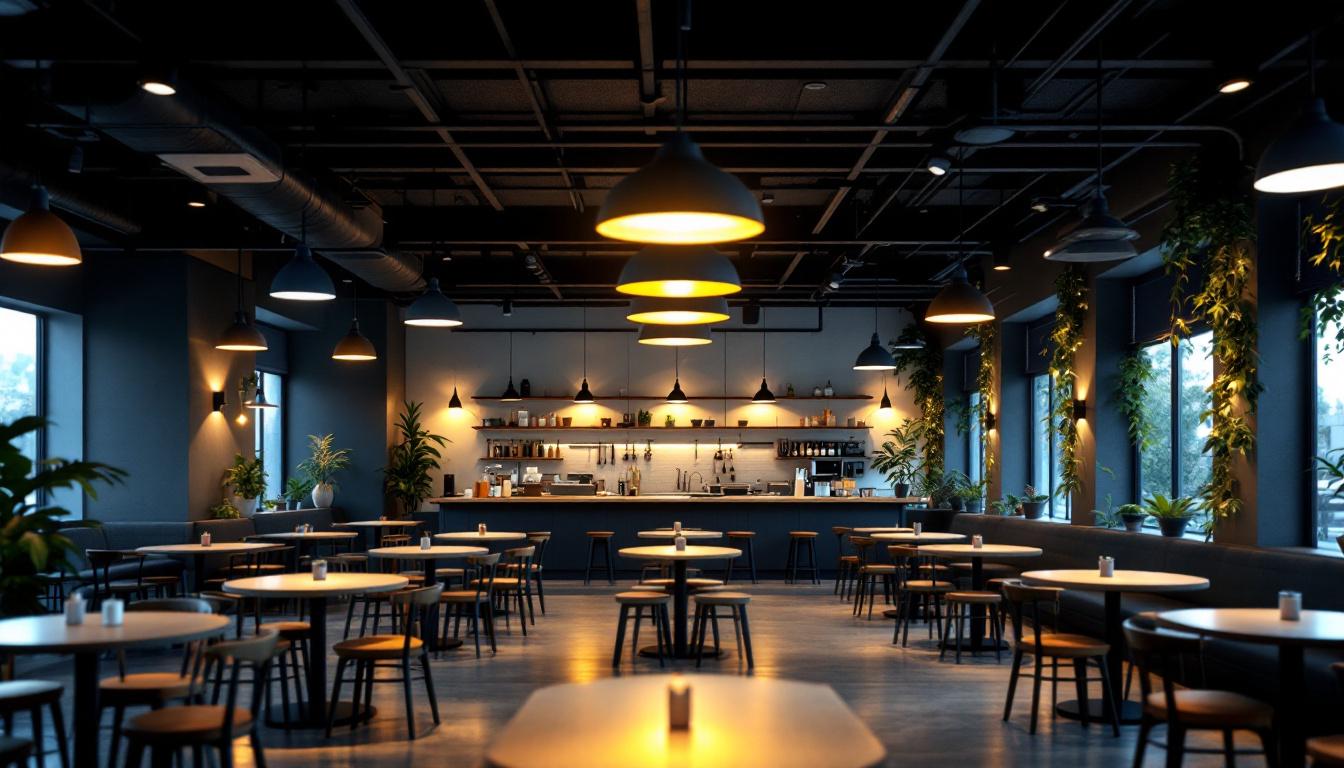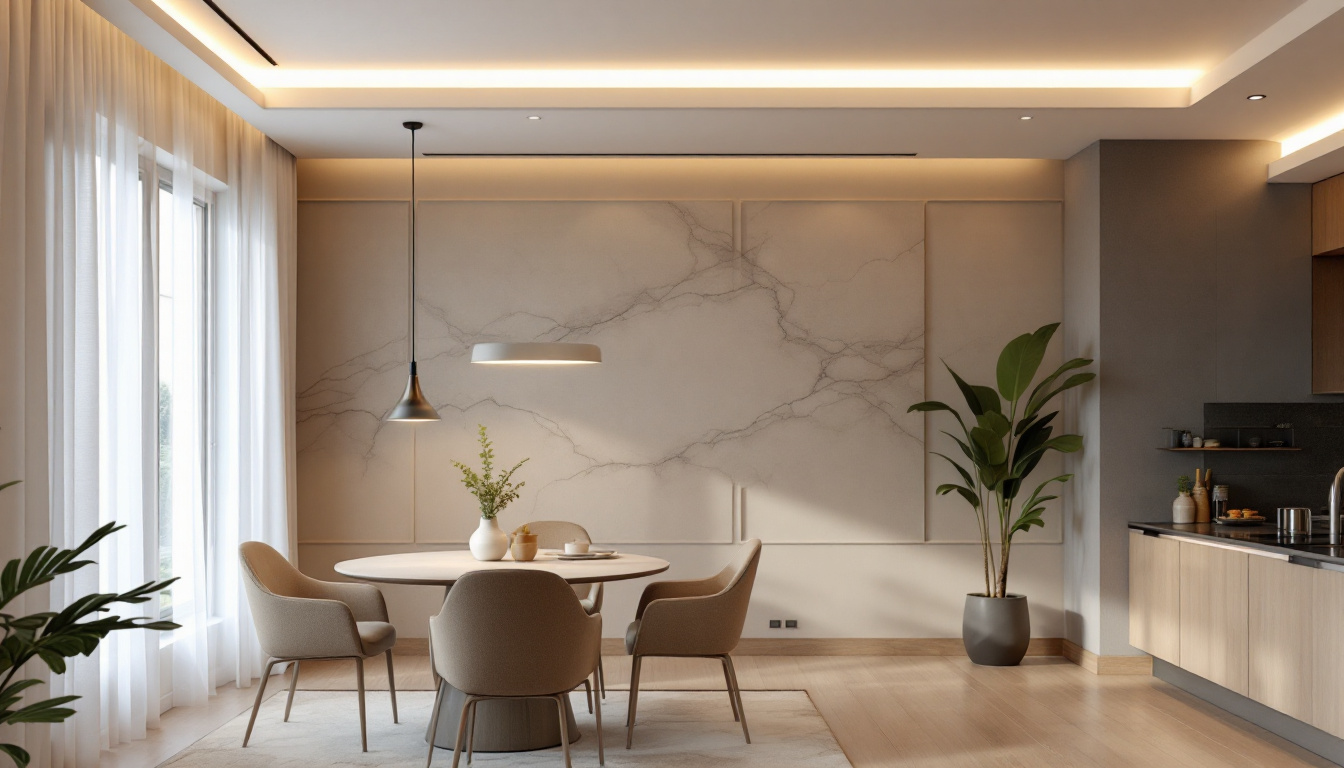
Lighting plays a crucial role in creating an inviting and functional atmosphere in cafeterias. For lighting contractors, understanding the nuances of cafeteria lighting is essential to meet both aesthetic and practical needs. This article outlines the key do’s and don’ts for lighting contractors to ensure successful cafeteria lighting projects.
Effective lighting in cafeterias not only enhances the dining experience but also influences the behavior and mood of patrons. Proper lighting can encourage social interaction, improve visibility, and create a welcoming environment. Furthermore, it can significantly impact energy consumption, making it essential for contractors to choose the right lighting solutions.
In a setting where people gather to eat, work, or socialize, the lighting must be versatile. It should cater to different activities throughout the day, from bright, energizing lights during busy lunch hours to softer, ambient lighting in the evenings. Understanding these dynamics is key to successful cafeteria lighting design.
When designing lighting for a cafeteria, several factors must be taken into account. The layout of the space, the color schemes, and the intended atmosphere all play significant roles. Additionally, the type of food served and the demographic of the clientele can influence lighting choices.
For instance, a cafeteria serving primarily students may benefit from bright, vibrant lighting that fosters energy and engagement. Conversely, a café aimed at adults may require a more subdued, relaxed atmosphere. These considerations are crucial for creating a tailored lighting solution that meets the specific needs of the cafeteria.
Moreover, the integration of natural light can also play a pivotal role in cafeteria lighting design. Large windows or skylights can not only reduce the need for artificial lighting during the day but also create a more inviting and open atmosphere. Natural light has been shown to boost mood and productivity, making it an excellent choice for spaces where people gather for extended periods. Additionally, incorporating adjustable lighting systems can allow for flexibility, enabling staff to modify the ambiance based on the time of day or specific events, such as late-night study sessions or community gatherings.
Another aspect to consider is the use of energy-efficient lighting options, such as LED fixtures, which not only reduce electricity costs but also have a longer lifespan compared to traditional bulbs. This not only benefits the cafeteria’s budget but also aligns with sustainability goals, appealing to environmentally conscious patrons. The choice of lighting can also reflect the cafeteria’s brand identity; for example, a modern, minimalist design may utilize sleek, contemporary fixtures, while a more rustic establishment might opt for warm, vintage-style bulbs to create a cozy, inviting vibe. Each decision contributes to the overall narrative of the space, enhancing the dining experience for all who enter.
Implementing effective cafeteria lighting involves adhering to certain best practices. Here are some essential do’s for lighting contractors to consider.
Before embarking on a lighting project, a comprehensive assessment of the cafeteria space is vital. This includes evaluating the dimensions, layout, and existing architectural features. Understanding how natural light enters the space can also inform decisions about artificial lighting.
Contractors should take note of any obstructions, such as columns or high ceilings, that may affect light distribution. By conducting a thorough assessment, contractors can create a lighting plan that maximizes efficiency and effectiveness. Additionally, it is beneficial to consider the flow of foot traffic within the cafeteria. High-traffic areas may require brighter lighting to ensure safety and visibility, while quieter corners can benefit from softer, more ambient lighting to create a comfortable atmosphere.
Layering light is a fundamental principle in lighting design. It involves combining different types of lighting—ambient, task, and accent—to create a well-rounded illumination scheme. Ambient lighting provides overall illumination, while task lighting focuses on specific areas where activities occur, such as food stations or dining tables.
Accent lighting can be used to highlight architectural features or artwork, adding depth and interest to the space. By incorporating these layers, contractors can create a dynamic and inviting environment that caters to various needs. Furthermore, the choice of fixtures can also play a significant role in the overall aesthetic. For instance, pendant lights over dining tables can serve as both task and accent lighting, creating a focal point while ensuring that diners have adequate light for their meals.
In an age where sustainability is paramount, energy efficiency should be a top priority for lighting contractors. Utilizing LED lighting is one of the most effective ways to reduce energy consumption while maintaining high-quality illumination. LEDs not only consume less power but also have a longer lifespan, reducing the need for frequent replacements.
In addition to choosing energy-efficient fixtures, contractors should also consider incorporating smart lighting controls. These systems allow for adjustments based on occupancy, time of day, and natural light levels, further enhancing energy savings. Moreover, integrating daylight harvesting techniques can optimize the use of natural light, reducing reliance on artificial sources during peak daylight hours. This not only contributes to lower energy bills but also creates a more pleasant dining experience, as natural light has been shown to improve mood and well-being.
While there are many best practices to follow, there are also common pitfalls that lighting contractors should avoid. Here are some key don’ts to keep in mind.
One of the most significant mistakes contractors can make is overlooking the maintenance requirements of the lighting system. Choosing fixtures that are difficult to access or maintain can lead to increased costs and dissatisfaction down the line.
Contractors should opt for fixtures that are easy to clean and replace, ensuring that the cafeteria remains well-lit and inviting over time. Additionally, regular maintenance schedules should be established to keep the lighting system functioning optimally. This can include routine inspections to check for burnt-out bulbs, as well as cleaning fixtures to remove dust and grime that can diminish light output. By prioritizing maintenance, contractors can help extend the lifespan of the lighting system and enhance the overall ambiance of the cafeteria.
Safety should always be a priority in any lighting project. Contractors must adhere to local building codes and safety standards when designing and installing lighting systems. This includes ensuring adequate illumination in all areas, particularly in high-traffic zones such as entrances, exits, and food service areas.
Furthermore, contractors should be mindful of glare and shadows that could create hazards. Proper placement of fixtures and the use of diffusers can help mitigate these issues, creating a safer environment for patrons and staff alike. It’s also essential to consider the color temperature of the lighting, as warmer tones can create a more inviting atmosphere, while cooler tones may enhance visibility. Balancing these elements can contribute significantly to a safe and pleasant dining experience.
Feedback from cafeteria staff and patrons can provide invaluable insights into the effectiveness of the lighting design. Contractors should encourage open communication and be willing to make adjustments based on user experiences. Ignoring this feedback can lead to a disconnect between the intended design and the actual user experience.
Regular check-ins with cafeteria management can help identify areas for improvement and ensure that the lighting continues to meet the evolving needs of the space. Additionally, utilizing surveys or informal discussions with patrons can reveal how the lighting affects their dining experience, from comfort levels to visibility of food options. By actively seeking and responding to this feedback, contractors can foster a collaborative atmosphere that ultimately enhances the cafeteria’s overall function and enjoyment for everyone involved.
As with any design field, lighting trends evolve over time. Staying informed about the latest developments can help contractors offer cutting-edge solutions to their clients.
Biophilic design, which emphasizes the connection between humans and nature, is becoming increasingly popular in cafeteria settings. Incorporating natural elements, such as plants and natural light, can enhance the dining experience and promote well-being.
Contractors can achieve this by designing lighting systems that complement natural light sources and by using fixtures that mimic natural forms. This approach not only improves aesthetics but can also contribute to a more enjoyable dining atmosphere.
The rise of smart technology has made its way into cafeteria lighting as well. Smart lighting solutions allow for greater control over the lighting environment, enabling adjustments based on specific needs and preferences. These systems can be programmed to change brightness levels or color temperatures throughout the day, creating a more dynamic experience.
Additionally, smart lighting can be integrated with other building systems, such as HVAC, to optimize energy efficiency and comfort. Contractors should consider these options when designing lighting systems for cafeterias.
While functionality is crucial, aesthetics should not be overlooked. Unique and visually appealing fixtures can serve as focal points within the cafeteria, enhancing the overall design. Contractors should explore a variety of styles, materials, and finishes to find the perfect balance between form and function.
From industrial-style pendant lights to sleek modern designs, the right fixtures can elevate the ambiance and create a memorable dining experience.
Lighting contractors play a vital role in shaping the atmosphere of cafeterias. By adhering to the do’s and don’ts outlined in this article, contractors can create effective lighting solutions that enhance both functionality and aesthetics. A thorough understanding of the space, energy-efficient practices, and a commitment to safety and maintenance are essential elements of successful cafeteria lighting design.
As trends continue to evolve, staying informed and adaptable will ensure that lighting contractors remain at the forefront of the industry. Ultimately, the goal is to create inviting, safe, and efficient environments that enhance the dining experience for all patrons.
Ready to elevate your cafeteria lighting projects with the best in spec-grade lighting? At LumenWholesale, we offer an extensive selection of top-quality lighting products that meet the highest industry standards. Say goodbye to inflated markups and hello to unbeatable wholesale prices, all while enjoying the convenience of free shipping on bulk orders. Enhance your lighting designs with the perfect blend of quality, affordability, and convenience. Take the next step in creating inviting and efficient dining experiences with Wholesale Lighting at the Best Value from LumenWholesale.

Discover the must-have wiring tools every lighting professional needs in their toolkit.

Discover how to transform your dining room with LED flat ceiling lights by optimizing for maximum efficiency.

Explore innovative strategies employed by smart lighting contractors in utilizing LED grow lamps to optimize plant growth.

Discover why LED replacement pot lights are revolutionizing the lighting industry.